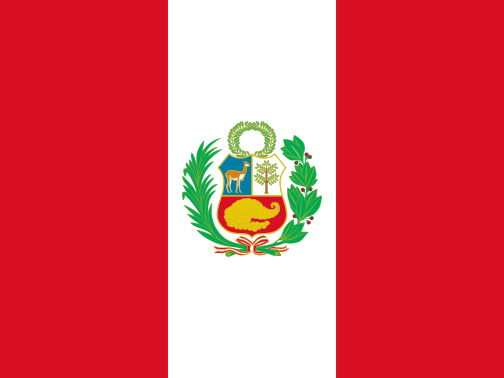
Peru
While print and TV in Peru adjust to a sharp shift of advertising towards digital content, journalists also have a raft of political and legal challenges to face, not least an accusation that investigative reporters are engaging in ‘image terrorism’.
The headwinds do not look good for traditional media in Peru, with forecasts that digital media will account for nearly two-thirds of advertising spend before the decade is out. TV in particular is facing a halving of its ad revenues by 2029, according to IPG Mediabrands. Layoffs in legacy media organisations have intensified – the most notable case being Latina Television. A leading broadcaster since 1983, it has now cancelled its evening newscast and let prominent staff go.
Digital video is a big winner, and digital native outlets are making the most of preparing for what is going to be a turbulent year politically. Canal Ya is a streaming channel on YouTube and other platforms devoted to journalistic content while La Roro Network, which started as an entertainment-based streamer aimed at ordinary Peruvians, has expanded its programming to political analysis and debate. There’s going to be plenty to talk about. The April 2026 polls will be for the presidency and a newly expanded Congress comprising 60 senators. But at the same time attacks on journalists have escalated.
A March visit from the Inter American Press Association (IAPA) reported that freedom of expression and of the press in Peru is in steep decline. It documented a marked increase in legal actions against journalists, threats from organised crime, restrictions on access to public information, pro-government bias in state media, and legislative proposals aimed at curtailing press freedom.1 Among the most controversial moves are new powers for the Peruvian Agency for International Cooperation (APCI) which can now regulate and sanction NGOs that receive international funding, especially when it is used for legal, technical, or financial support for actions brought against the Peruvian state.2 Human-rights victims and journalists seeking legal support against the government are expected to be some of the most impacted by this law.
Additionally, lawmakers have introduced a so-called ‘gag law’ to increase prison sentences for defamation and to alter the legal standards for the right to rectification. According to the National Association of Peruvian Journalists (ANP), 30 to 35 journalists face legal proceedings each year.
Attacks have also come directly from President Boluarte and her ministers. Two major scandals involving the president have intensified tensions. The first, dubbed ‘Rolexgate’, was uncovered by digital outlet La Encerrona (The Lockdown) in early 2024. It revealed that President Boluarte had acquired at least three high-end watches and luxury jewellery, none of which were declared in her official disclosures. Initially denying the allegations, she later said they were ‘loans’ from the governor of the city of Ayacucho, and said she had returned them.
The second controversy emerged when independent weekly political magazine Hildebrandt en sus Trece (Hildebrandt Holds his Ground) reported that the president had secretly left office for two weeks to undergo cosmetic surgery, without notifying Congress, which she would have been required to do by the constitution. Boluarte claimed the procedures were essential and that she remained conscious and active throughout.3
In response to these investigations and others, the president has accused journalists of spreading ‘fake news’ and engaging in ‘image terrorism’ by attacking her lifestyle. Leaked audio from her former interior minister, Juan José Santivañez, captured him instructing a member of an elite police unit to ‘control’ Marco Sifuentes, founder of La Encerrona. The most extreme example of the mounting tension and animosity toward the press came with the killing of Gastón Medina Sotomayor, journalist and owner of Cadena Sur TV, who was based in Ica, south of Lima. He was shot and killed outside his home in an attack reminiscent of tactics used to silence the press in Mexico.
The ANP’s 2024 report lists government officials at both national and local levels as the main aggressors against journalists, including Lima Mayor Rafael López Aliaga.4 Journalist Clara Elvira Ospina of Epicentro TV shared a video on X in which she replayed frequent slurs and insults she receives, suggesting the attacks are both systematic and publicly funded.
However, many politicians, including candidates, are sidestepping the media altogether, especially encounters where they could face scrutiny, instead opting to appear with influencers for light, superficial interviews. The most striking example was the visit by US YouTuber IShowSpeed (Darren Jason Watkins Jr.), who was briefly named ‘Mayor of Lima for an Hour’ by López Aliaga – an apparent attempt to leverage the influencer’s 38 million YouTube followers.
Lourdes M. Cueva Chacón
San Diego State University
Changing media
Traditional news sources such as TV and print continue to decline in weekly use, while social media news use (64%) is high by international standards. Peruvians have especially embraced the short-form video network TikTok (33% for news) which is up 6pp this year.
Pay for online news
18%
Trust in news overall
40%
(+5)
=22/48
Trust in the news (40%) is up by 5 points this year, perhaps linked to journalists’ role in bringing recent controversies to light. Some news brands with a long heritage, such as the largest broadcast network RPP Noticias and historic newspaper El Peruano, are trusted by over 50% of our respondents, but many Peruvians see big media companies as not sufficiently independent from powerful business and political interests.
RSF World Press Freedom Index
130/180
Score 42.88
Measure of press freedom from NGO Reporters Without Borders based on expert assessment. More at rsf.org
Share news via social, messaging or email
42%
Footnotes
1 https://www.sipiapa.org/notas/1216884-peru-la-sip-junto-otras-organizaciones-internacionales-y-nacionales-rechazan-ley-del-congreso-que-afecta-la-libertad-prensa
2 https://www.wola.org/es/2025/03/organizaciones-internacionales-repudian-nueva-ley-en-peru-que-limita-y-censura-actividades-de-organizaciones-de-sociedad-civil/

